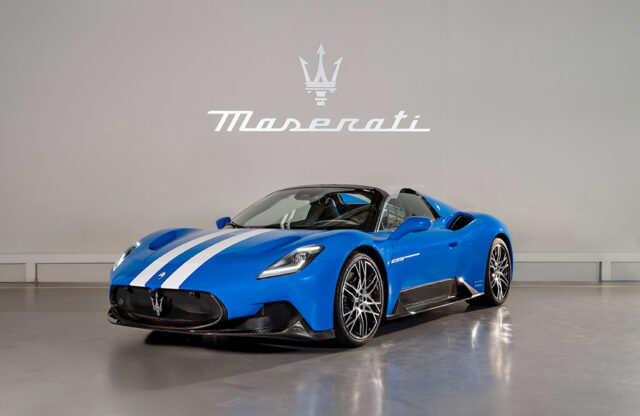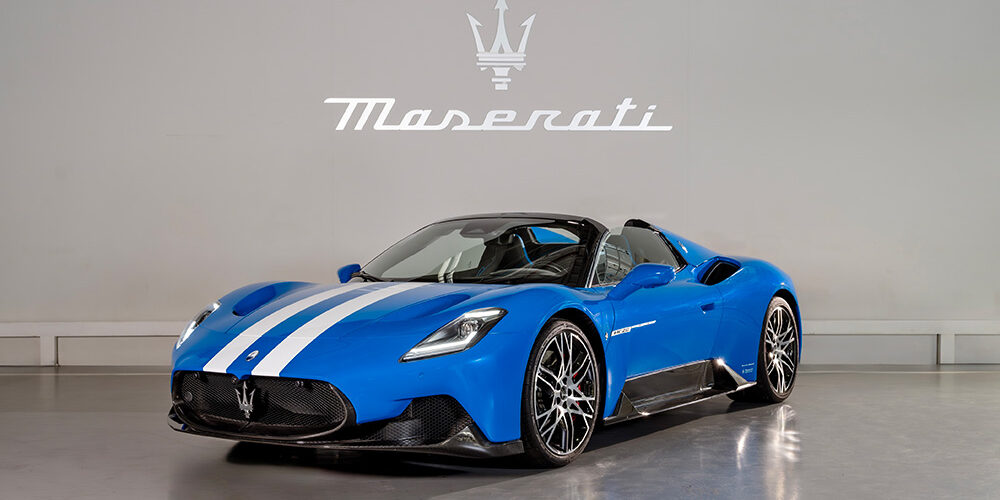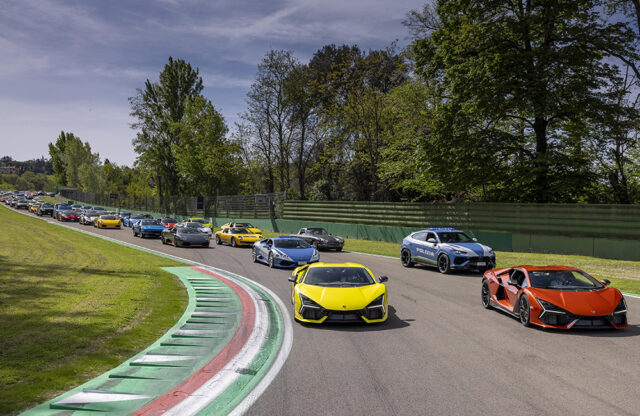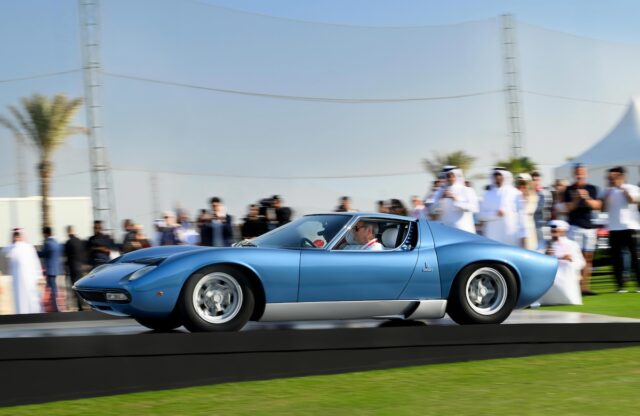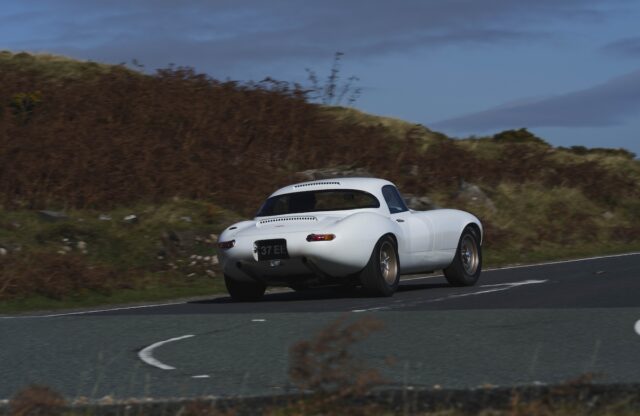Maserati Fuoriserie is a good news story at a time when the company seems to attract negative headlines almost on a weekly basis. Speaking to programme lead Davide Baldini at the public launch of the MCPura at Goodwood Festival of Speed, the percentage of Maserati orders placed through Fuoriserie has grown from six percent in 2023 to 23 percent in 2025.
That’s a long way from when the project started in 2020, deep into Covid. At the time, the programme dealt with cars such as the Levante, Ghibli, Quattroporte and GranTurismo, but today it is available across the whole range, from the GranTurismo and Grecale to the MC20 and recently launched MCPura.
There are several layers to the Fuoriserie experience, Davide says. “We have the first level in the collection, which can be chosen by the customer – wheels, calipers, external colours – at dealer level with a good configuration system.”
Maserati Fuoriserie describes this first collection as a catalogue, with two main design styles. Collezione Corse takes its inspiration from the Trident’s racing history, using paint rather than decals to create liveries. Wheel and brake calipers can also be treated the same way, while the interiors are inspired by tanned vegan leather and melange wool to create heritage-based leather colours. The Collezione Futura is inspired by interior and product design, plus sportswear, with ‘extreme’ or ‘industrial’ shades, with textured or matte finishes with what Maserati calls interference pigments.
However, Fuoriserie can go much further than that. “Then we have a second level of imagination that is the bespoke world – this bespoke world is a completely different experience, and relationship with the customer,” Davide says.
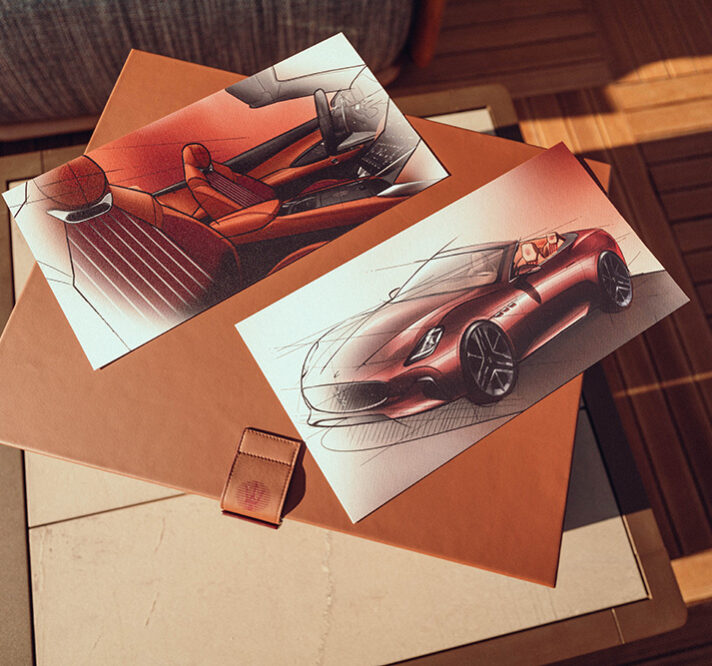
We have a second level of imagination that is the bespoke world – this bespoke world is a completely different experience, and relationship with the customer"
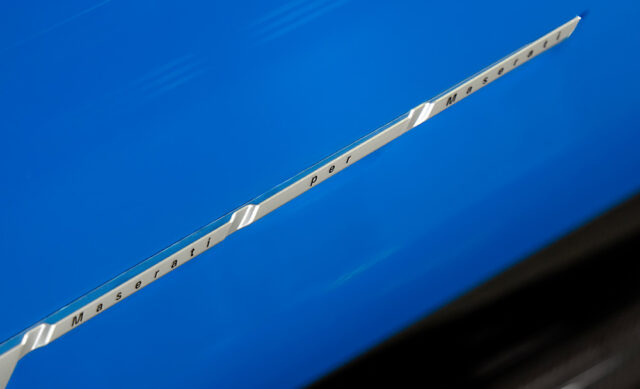
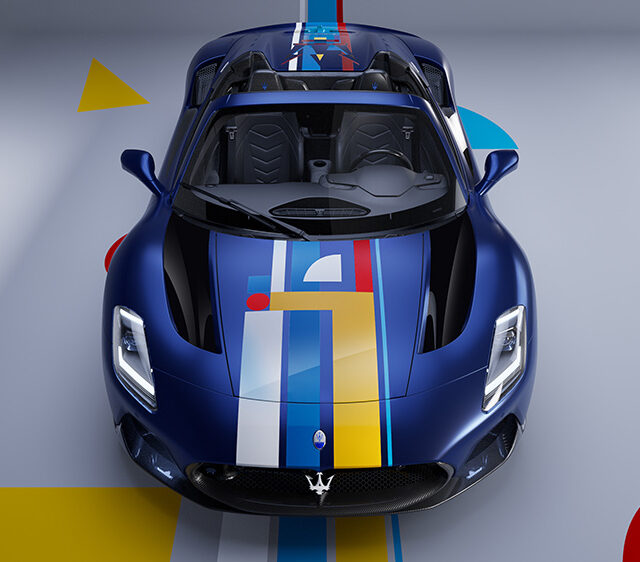
Davide is keen to point out that although the Furoserie programme has existed as an entity only for the past five years, individualisation projects have been going on for much of the brand’s 110 years of operation. “The company’s founders designed the cars based on customer desires – the first racing cars were [specified in that way] in terms of number, colours, engine power; it was always a discussion,” he says.
It’s an approach Davide is bringing to the current projects. “We are working a lot on not only the product and the level of personalisation we can develop, but we also try to work with the customer on what he or she needs, and the experience they have,” he says. “From day zero to delivery, we manage a dedicated experience for the customer – what’s the purpose of the purchase; what level of customisation he or she wants, and the story of the car’s creation from us. That is the main difference with Maserati Fuoriserie compared to other manufacturers.”
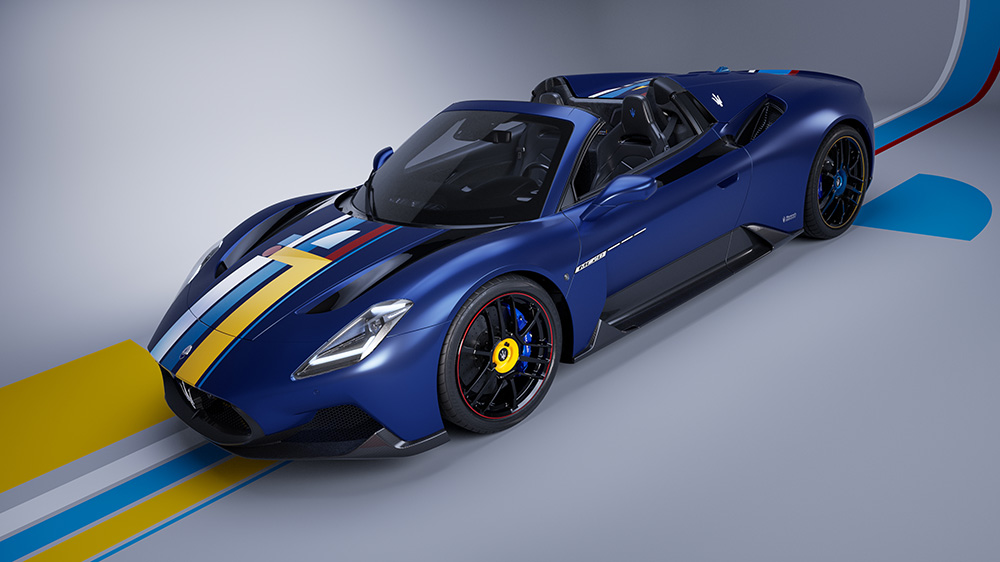
The programme has continues to grow as Maserati continues its focus on developing Modena as its home. The expansionist policies of the past 15 years or so, which failed to deliver on somewhat unrealistic promises, are being turned back. The old Bertone factory, which built the Ghibli and Quattroporte VI, was closed down in 2023 following the cessation of the models’ production, and construction of the GranTurismo and GranCabrio will move to Modena after the summer.
This renewed focus of the historic home of Maserati has seen greater investment in Maserati Fuoriserie, too. “”The programme is growing day by day – we have opened Officine Fuoriserie Maserati in Modena. It’s a dedicated showroom where we can do bespoke configuration,” Davide explains. “Then we have the new paint shop in the dedicated Fuoriserie area, where we can manage 24 cars per day in 24 different colour schemes. Then we have the engineering and supply-chain team, who will negotiate on behalf of the customers with suppliers to find the right components based on their request. There is no limit to the creativity possible.”
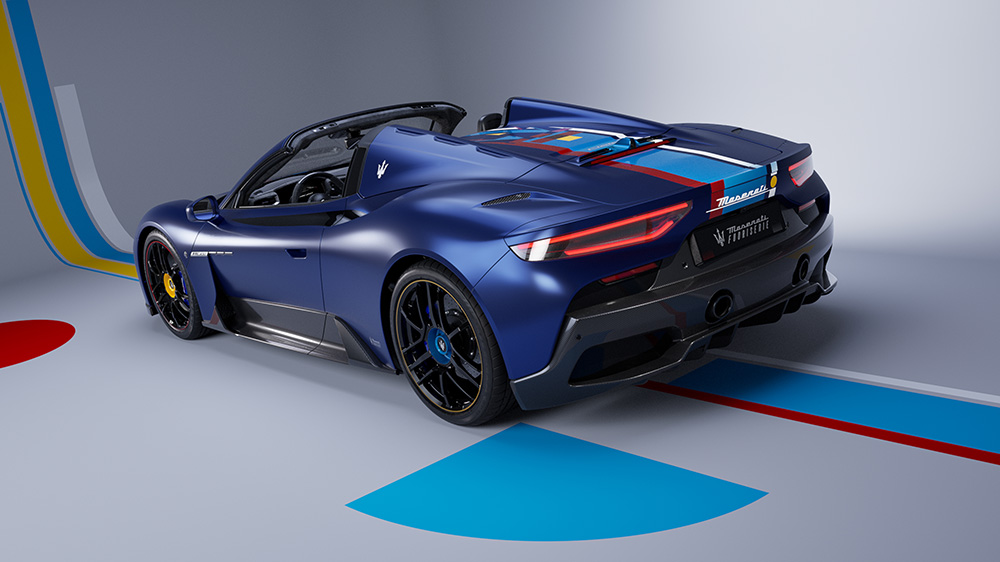
Davide says that Maserati Fuoriserie is open to almost anything, with quality and safety being the ultimate considerations. “Before we deliver the car to the customer we want to be sure that the materials the customer is asking for are the right level of quality – we test the materials not just for quality, but also for durability,” he says. “The second consideration is safety – for example, if the customer wants a cluster in metal and it reflects the sun, then we decline. For the rest there is no limit.”
Davide says that working alongside Maserati’s head of design, Klaus Busse and his team at Centro Stile, Fuoriserie is able to provide alternatives and suggestions, but ultimately the customer is the focus. “If the customer remains in his or her position, it’s not a problem because what is important is achieving a dream.”
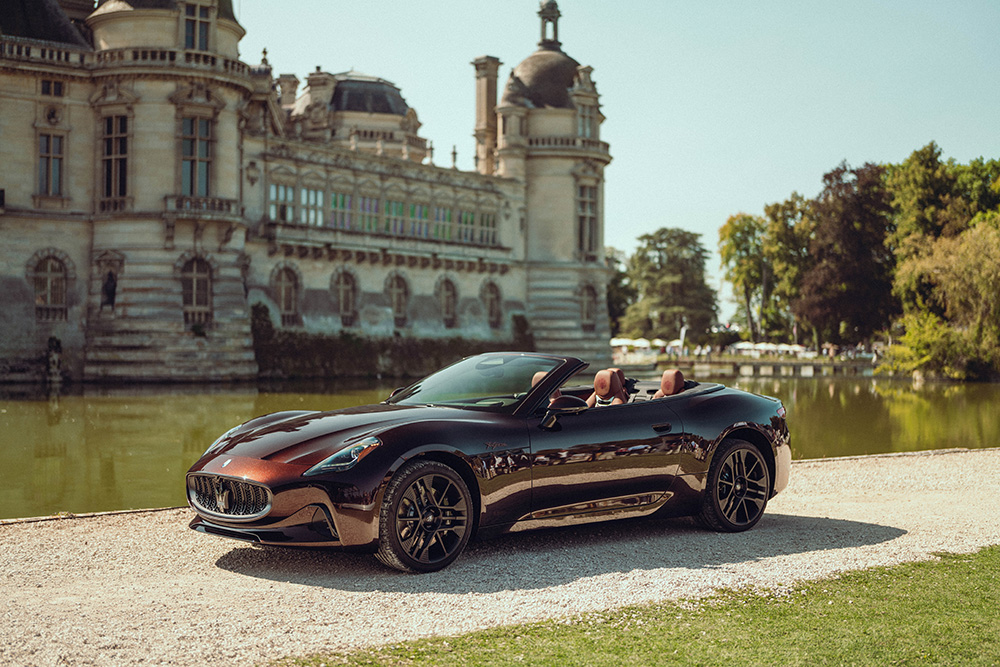
Davide cites the above GranCabrio Folgore Tignanello, which publicly debuted at last year’s Chantilly Arts & Elegance and was created to celebrate the 50th anniversary of Marchesi Antinori’s Tignanello wine. “We played a lot with the materials – the centre of the seats were made from recycled materials derived from cork,” Davide explains.
While Maserati Fuoriserie can offer wild colour schemes, he explains that most commissions are more restrained: “On average, the Maserati customer is a very elegant person, so normally we are playing with elegant colours and interiors because it’s a link between the DNA of our brand and the customer.”
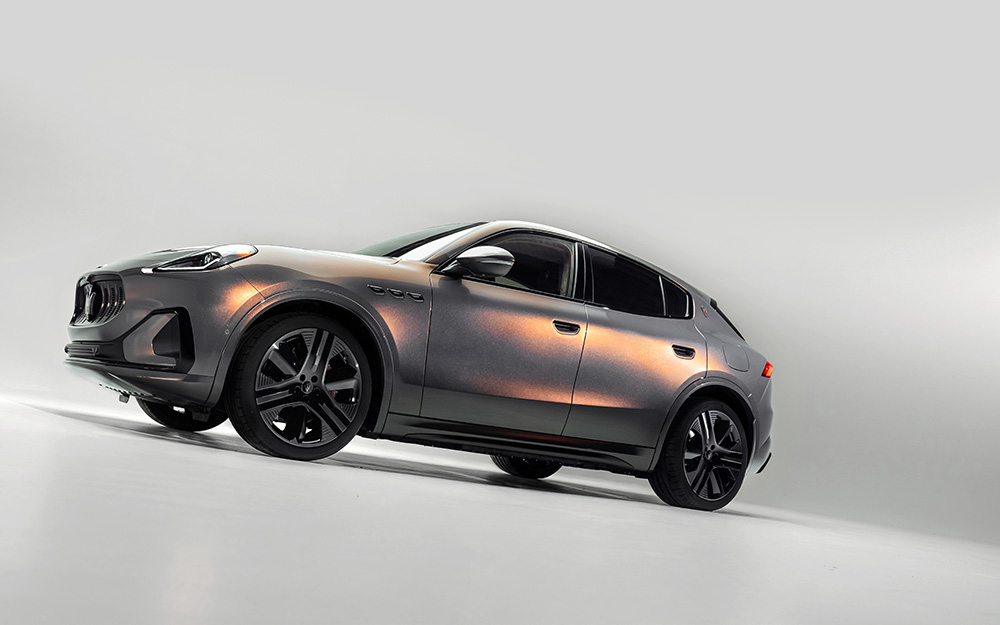
However, there’s the potential for much more at Maserati Furorserie. Alfa Romeo’s Bottega programme, which uses the Maserati MC20 as the basis for the Alfa Romeo 33, shows the possibilities of a factory-backed atelier programme. Could Fuoriserie open up such possibilities for bespoke Maseratis, potentially with outside designers and coachbuilders? “I cannot say we are in that phase, but we are open to the idea,” he says. “Last year we designed an MC20 in association with Hiroshi Fujiwara…”
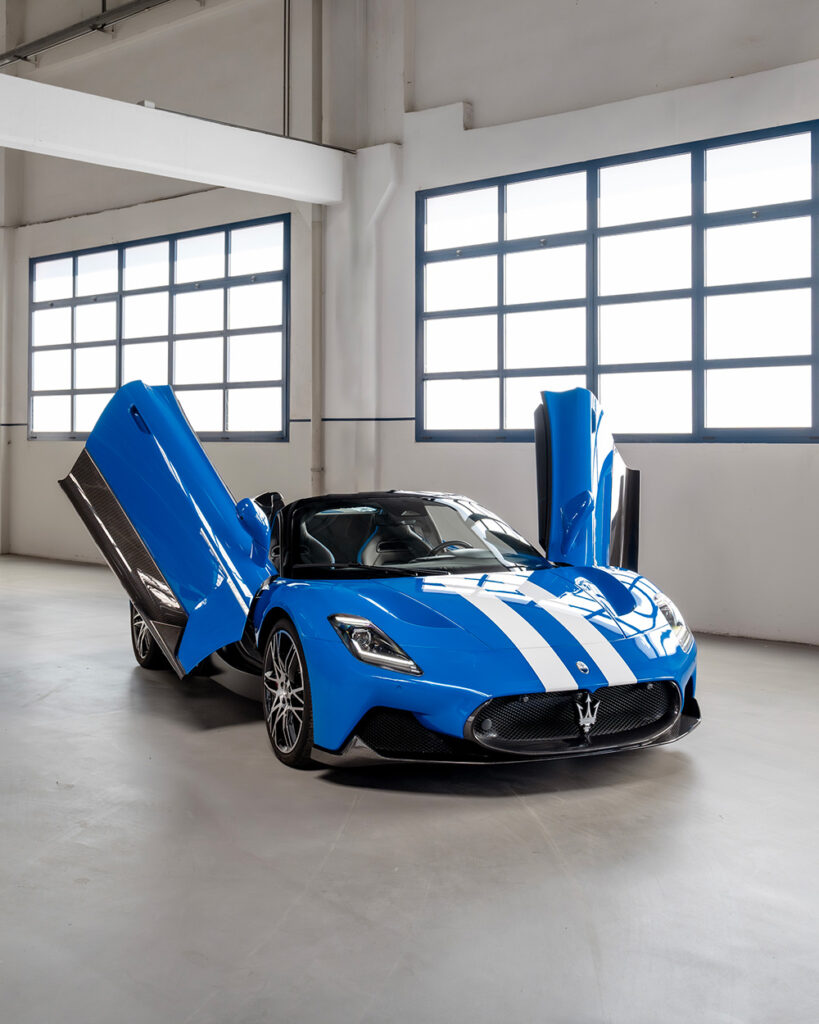
Davide’s favourite project was the above MC20, the Maserati per Maserati commissioned by the grandchildren of Ettore Maserati, co-founder of the brand in 1914. It blended a Blu Infinito exterior with a race-inspired interior, but for Davide the most important experience was seeing the car handed over, alongside Maserati test driver Andrea Bertolini and company legend Ermanno Cozza. “When we did the unveiling, it was an incredible moment – the emotion of seeing the car presented in that way, unveiled by the workers who built it,” he says. “This is one of the main differences between us and other companies – each delivery will be different from customer to customer.”
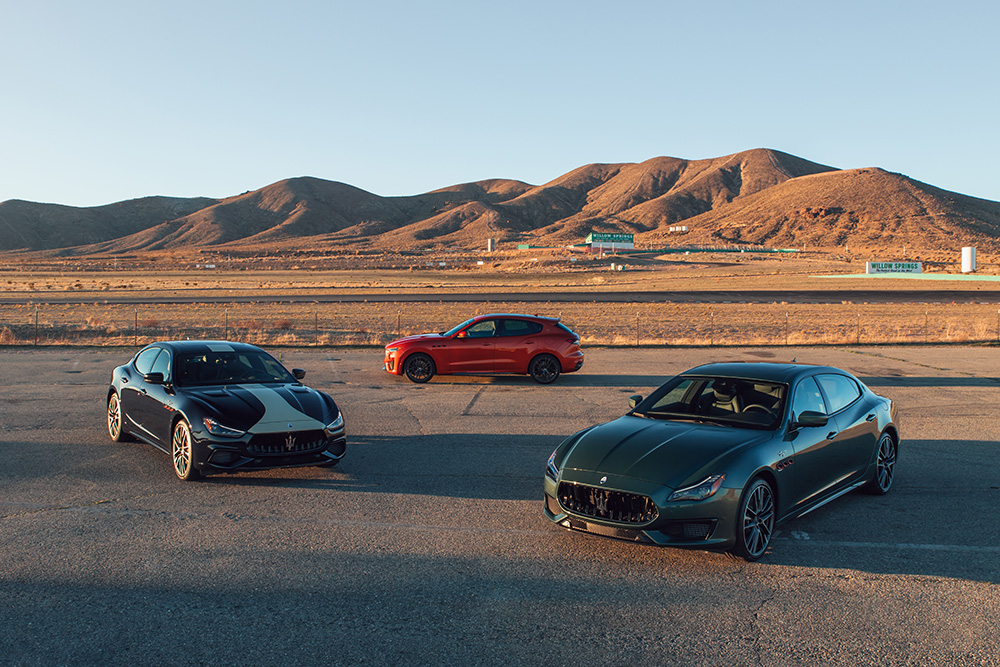
The launch of Officine Fuoriserie Maserati has prompted requests for customisation of cars from Maserati’s back catalogue, but Davide is keen to separate the work he does – and the cars – from that of Maserati Classiche. “We have invested in Classiche with a dedicated workshop, certification and rebuilding cars,” he says. “When we are talking about classics, you are talking about a piece of history, so you don’t touch it – you only restore, to maintain its value.”
He views Maserati Fuoriserie’s work as being 99 percent dedicated to new cars or those from the current model range, yet there is scope for older but still recent cars to be part of the programme. “A bespoke customer with an M139 GranCabrio asked me if we could work together; we are developing a new idea,” he says.
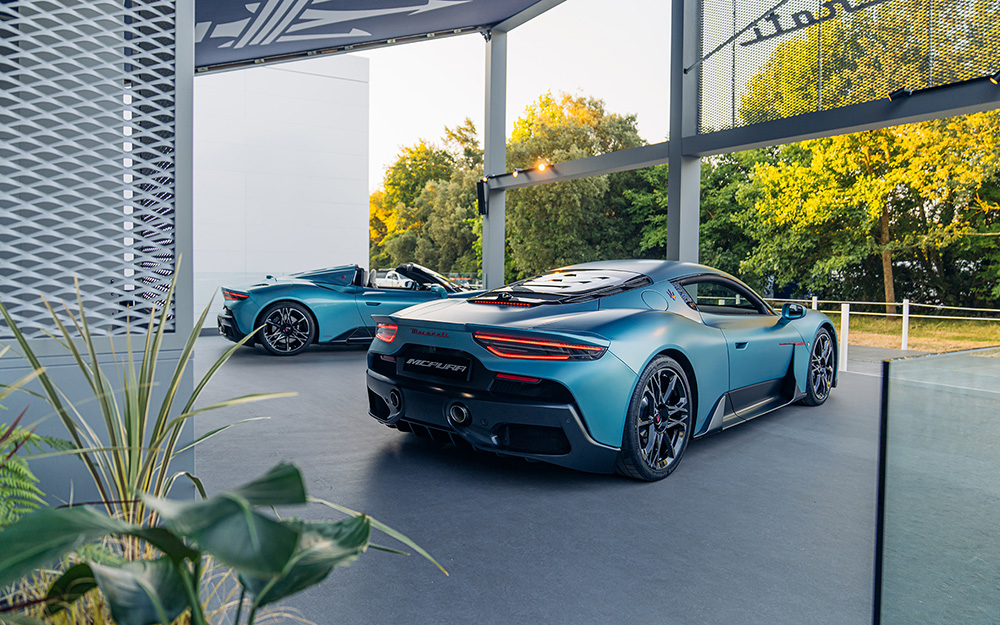
The launch of the MCPura at Goodwood (pictured above) has already prompted new enquires about the Fuoriserie programme – something that Davide couldn’t tell us too much about. However, despite the negativity that Maserati continues to get from the mainstream and automotive press, there’s a tangible positivity from those within the marque these days. Fuoriserie’s success looks to be a cornerstone of that – and Davide says that with greater visibility behind the programme, there’s plenty more to come in future.
More details can be found here.
